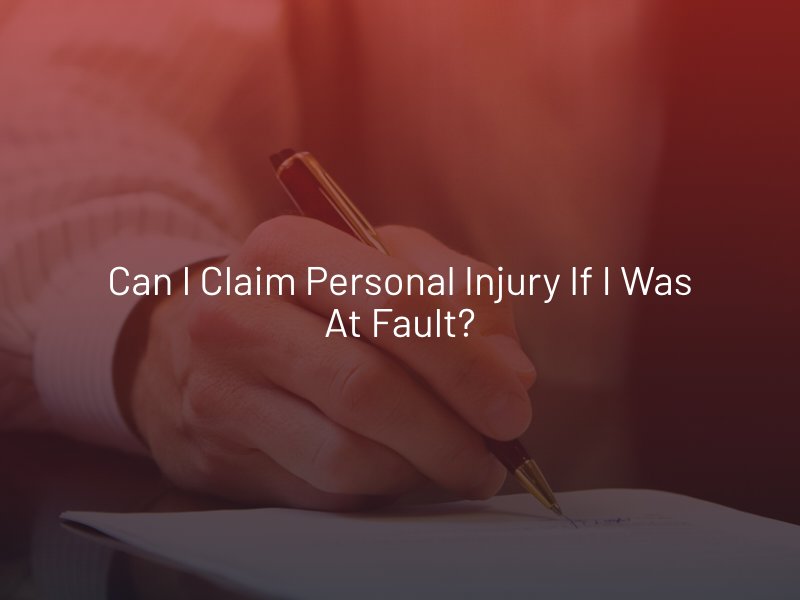Can I Claim Personal Injury If I Was at Fault?
Whether you can claim personal injury if you were at fault for an accident will depend on the type of insurance coverage you have and if you were entirely to blame.

Total Fault
If you were solely responsible for a car accident, it is unlikely that you will be able to file a personal injury claim for damages. Nevada is a fault state, which means the person at fault for a collision is liable for the damages of anyone injured. Liability insurance is mandatory for drivers and will pay for the damage and injuries you cause to another vehicle and its passengers up to your policy limits. As a result, you will likely have to pay for your losses out-of-pocket unless you have optional insurance coverage, such as collision, personal injury protection (PIP), or MedPay insurance. However, you will still be responsible for your deductible.
Collision coverage will pay for the repair or replacement of your vehicle after an accident regardless of fault. MedPay will cover expenses for medical, surgical, dental, and chiropractic treatments that are considered necessary and reasonable. If you already have health insurance or HMO coverage, you may not have added MedPay to your policy. PIP covers more than MedPay, including necessary medical expenses, lost wages, and other accident-related expenses. If you do not carry these optional types of coverage, you can apply your personal health insurance to help with medical costs. Still, you will be responsible for the costs of your injury that are not covered and your vehicle’s damage.
Partial Fault
If you are only partially to blame for an accident in Nevada, you can claim personal injury. However, the state’s modified comparative negligence law will determine how much compensation you can recover. Under this law, a percentage of fault is assigned to each driver, which reduces their payment accordingly. For example, if you are awarded $100,000 and found 30 percent at fault, you will receive 70 percent of your award or $70,000. However, if you are found more than 50 percent to blame, you cannot recover any compensation.
How Does an Insurance Company Determine Fault?
Even if you believe you were at fault for an accident, unknown factors may have contributed to the collision. That is why a personal injury attorney would advise you never to admit fault. To figure out which party is to blame for an accident, an insurance adjuster will review the following:
Accident Scene Evidence
The adjuster will review any available photos and video of the accident scene that shows:
- The location of damage to the vehicles
- The final position of the vehicles after impact
- Property damage to the surrounding area
- Road and weather conditions
- Skid marks
- Road signs and/or traffic lights
- The injuries
- Any available surveillance footage
They will also typically examine the vehicles in person.
The Police Report
The officer’s opinion on who caused the collision can carry a lot of weight in an adjuster’s decision on fault. It will also be noted if a driver committed a traffic violation or was charged with a crime (e.g., driving while intoxicated), which can be significant evidence of fault.
Eyewitness Statements
Eyewitness statements are objective opinions on how the accident happened, which can help establish fault.
Medical Records
Medical documentation proves the extent of injuries and may also help an adjuster substantiate where the location of impact was in the collision.
Disputing Fault in a Personal Injury Claim
If you disagree with the insurance company’s finding of fault, you have the right to appeal or file a personal injury lawsuit. The insurer will likely take your dispute more seriously if you hire a car accident lawyer. When you are unrepresented, insurance companies tend to ignore or bully claimants. An attorney may be able to help you settle your case, but if it does make it to court, a judge or jury will determine who was at fault after hearing each side’s argument and reviewing the evidence.